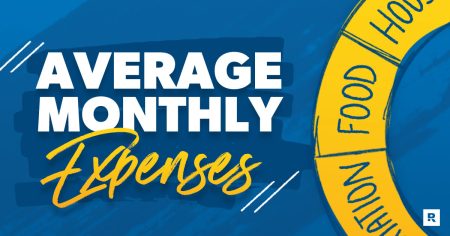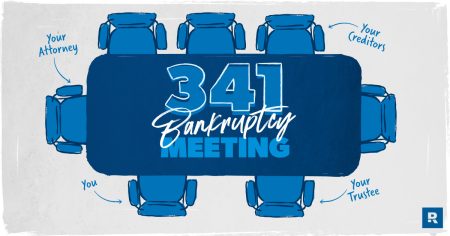When it comes to retirement, most people find themselves either sitting in the regret of past money mistakes or winning big-time with money, on track to enjoy a retirement they’ve always dreamt about.
Here’s the difference: Those who are on track to reach their retirement goals have a plan. They’re intentional, focused, and they took the time to really think about the kind of future they wanted. And then they worked their plan with full-speed ahead intensity—they didn’t let anything get in their way!
Do you have a retirement plan in place? Listen: Retirement planning isn’t an “old people” thing. It’s a smart people thing. And it’s never too early to start planning for your retirement future.
What Is Retirement Planning?
Retirement planning is the process of figuring out how much money you’ll need to save for retirement and then putting a plan in place to get there.
Here are a few questions to ask yourself as you start planning for your retirement:
- What do I want to do in retirement?
- When do I want to retire?
- How much money will I need to save by the time I retire?
- How much will I need to invest every month to hit my retirement goals?
- Which retirement accounts should I use?
- What should I be investing in?
- What about medical expenses and long-term care in retirement?
Why is a retirement plan so important? Because it gives you a clear path to success. A retirement plan takes a big, sometimes hard-to-imagine goal, and breaks it down into small, manageable steps you can take now (and keep taking) until you reach that big-picture goal. It inspires you to take action.
So, take some time to sit down with your spouse, maybe meet with a qualified investment professional, and start answering these questions. Remember: The sooner you start planning for retirement, the faster you’ll be able to make progress.
Ramsey Solutions is a paid, non-client promoter of participating pros.
How to Plan for Retirement in 9 Steps
Are you out of debt with a fully funded emergency fund in place? If that’s you—that’s great! You’re ready to start investing and saving for retirement. But even if you’re currently working your way out of debt or piling up cash, we still want you thinking about retirement—this is what you’re working toward, after all.
How much will you need for retirement? Find out with this free tool!
If you’re intimidated by just the thought of planning for retirement, that’s okay. Take a deep breath and check out these simple steps you can take to get your plan rolling.
Step 1: Set your retirement goals.
What is your retirement dream? Do you want to ride around the country in an RV? Buy a house on a lake and go fishing every day? Spend a bunch of time with your grandkids?
Whatever your dreams and goals are, you need a high-definition picture in your head of what you want your retirement to look like to keep you motivated when you feel like taking your foot off the gas.
It’ll also give you a starting point for retirement planning and help you answer some important questions, like how much money you’ll need by the time you retire and how close you are to making your dream retirement a reality.
A recent study found that only half of workers (52%) have actually tried to figure out how much money they’ll need to save by the time they retire.1 That’s not good enough! Our free retirement assessment tool can help you figure out how much you need to save for your dream retirement.
Step 2: Save 15% of your income for retirement.
Those who save for retirement end up having money to spend in retirement. The question is: How much is enough? We recommend investing 15% of your gross income in good growth stock mutual funds through tax-advantaged retirement savings plans like your employer’s 401(k) and a Roth IRA (more on those in a minute).
Why 15%? We’ve found the 15% goal is enough to make progress on your retirement goals while leaving you enough margin to work on other financial goals, like as funding college for your kids or paying off your home early. Once you’ve got an empty nest and a paid-for home, you can ramp up your retirement savings later if you need to.
A couple with a household income of $75,000 could have around $1.4 million for retirement if they invest 15% of their income consistently for 25 years. In 30 years, they could have $2.6 million—and that’s assuming they never got another raise during their working lifetimes.
Ideally, you should be able to live off the growth of your retirement savings rather than dipping into your nest egg. You can use our Retirement Calculator to run projections based on your monthly contributions and when you expect to retire.
Step 3: Contribute to your 401(k).
According to The National Study of Millionaires, 8 out of 10 millionaires invested in their company’s 401(k) plan to help them achieve their net worth. In fact, no other investment vehicle was more important to reaching millionaire status than the 401(k)!
If you work at a company that offers you an employer match on your contributions, that’s where you start investing. That’s free money—and, seriously, who says no to free money?
At Ramsey, we love Roth 401(k)s in particular because the money you invest in them grows tax-free and you won’t be taxed when you take out money in retirement. So if you have a Roth option at work, go ahead and sign up for that!
Step 4: Invest in a Roth IRA.
If you don’t have access to a 401(k), or if you’re not thrilled with the investment choices offered by your workplace retirement plan, then the individual retirement account (IRA) is your next best friend.
Specifically, the Roth IRA (which also offers you tax-free growth and withdrawals in retirement) is the way to go. One of the great perks with IRAs is that you get to choose from thousands of mutual funds in the open market instead of the limited menu of options provided by a 401(k) plan, and you have more flexibility and control over your account.
However, keep in mind that IRAs have lower contribution limits than 401(k)s, so it’s possible that you can invest up to the match in your 401(k), max out your Roth IRA, and still not hit the 15% mark we recommend for retirement investing. If that’s the case, just go back to your 401(k) and invest the rest there!
Step 5: Pay off your mortgage early.
We’ve talked a lot about how to build up your retirement nest egg through investing. But you also need to set a goal to enter retirement completely debt-free. That means you need a paid-for house before you invite your friends, family and coworkers to your retirement party! Debt equals risk, and we want to eliminate risk from your retirement dream.
For the vast majority of Baby Steps Millionaires, two-thirds of their net worth is in retirement savings and one-third is their paid-off home. It took the average millionaire 10.2 years to pay off their mortgage and almost 7 in 10 (67%) live in paid-for homes without a mortgage.
As you advance in your career and increase your income, throw some of that extra money at your mortgage instead of letting lifestyle creep settle in. You can use our Mortgage Payoff Calculator to find out how making a few extra monthly payments each year can shorten your mortgage term.
Step 6: Study your Social Security options.
Think of Social Security benefits as icing on the cake of your retirement money, not the cake itself. Because the reality is, by the time you retire, there might not be much icing left!
If Congress doesn’t take action by 2033, the Social Security Administration will run out of its excess reserves and will only be able to pay out a portion of full benefits for retirees.2 Translation? You can’t rely on Social Security to take care of you.
Here’s the other key takeaway about Social Security benefits: While you can apply for benefits at any point from age 62 to 70 (full retirement age for most people is 66 or 67), you get rewarded for delaying your payments.
According to the Social Security Administration, these are the maximum monthly payouts you can receive (based on your age) if you start taking retirement benefits in 20243:
- Age 62 (Early retirement age): $2,710
- Age 66 (Normal or full retirement age): $3,652
- Age 67 (Normal or full retirement age): $3,911
- Age 70 (Delayed or late retirement age): $4,873
Deciding when to start taking Social Security benefits can be tricky. In most cases, it makes sense to take those benefits early and often, but it’s a good idea to talk with your investment professional first before you pull that trigger. Because once you start receiving Social Security, there’s no going back!
Step 7: Plan for health care costs in retirement.
As you map out your long-term retirement savings goals, don’t forget one crucial element: medical expenses. A couple retiring at age 65 will need roughly $413,000 in savings to have a good chance of covering their health care costs during their retirement.4
If you don’t want to dip into your hard-earned nest egg to pay for medical expenses, here’s how you can plan ahead to cover those costs.
Open an HSA
A health savings account (HSA) is a great strategy for covering medical costs in retirement! Basically, it’s a medical savings account paired with a high deductible health plan (HDHP) with a triple tax break: You contribute pretax dollars, you can invest money that grows tax-free, and you can make tax-free withdrawals for qualified health care expenses. It’s a tax win-win-win!
And, yes, you can invest with an HSA! Some providers will let you start investing your HSA funds once you’ve reached a minimum balance (usually $500 or $1,000), which will allow you to grow your savings for medical expenses in retirement.
This is a tool you should take advantage of sooner rather than later, though, because once you’re enrolled in Medicare, you won’t be eligible to open or contribute to HSA (but you can still pay for medical expenses with any HSA funds you already have available).
And speaking of Medicare . . .
Sign Up for Medicare—Even if You’re Still Working
Medicare is the government-provided health insurance program that pays for medical coverage for people age 65 and older. If you’re eligible for Social Security benefits, you’re also eligible for Medicare coverage starting at age 65.
Once you retire, you have eight months to enroll in Medicare without a penalty.5 If you sign up for Medicare while you’re still working (which you have the option to do), Medicare will become either your primary or secondary insurance, depending on how big your employer is.6
Get Long-Term Care Insurance
Long-term care insurance helps cover the costs of living in a nursing home, assisted living, or in-home care. And the simple fact is that most retirees will need long-term care at some point in their lives. If you’re not prepared, the cost could devastate your retirement nest egg—and put an additional financial burden on your family. That’s why you need to purchase long-term care (LTC) insurance as soon as you reach age 60. Period.
Step 8: Keep a long-term perspective.
Fear, anxiety and impulsiveness—those are the three biggest enemies you’ll face while trying to invest and plan for retirement. Not only will they cause you to panic and make dumb decisions—like pulling all your money out of your 401(k) when the stock market has a bad day—but they’ll also keep you from investing all together.
To build wealth and invest with success, you need patience—lots and lots of patience. Slow and steady wins the race every time. There are no shortcuts.
Remember, investing is a marathon, not a sprint. And it’s not for the faint of heart. The stock market is a roller coaster that’s going to go up and down, but you’ve got to be strong enough to stay on the ride through all the twists and turns.
Step 9: Work with a financial advisor.
You need someone who can help you create a retirement investing plan that fits with your life and your goals—and that means working with a financial advisor or investment professional you can actually trust.
Retirement planning is too important to figure out on your own! According to The National Study of Millionaires, 68% of millionaires said they worked with a financial advisor to achieve their net worth! They know the value of having someone there to guide them throughout their financial journey.
Connect With an Advisor Today
It’s a lot easier to chase your dreams and goals when you have someone cheering you on and giving you advice. That’s why we recommend you get an investment professional on your team to help you along the way.
Our SmartVestor program can connect you with a pro who’ll work with you to create a retirement plan for your specific situation. Plus, they’ll help you understand all your investment options and help you navigate the ups and downs of the market.
Read the full article here










